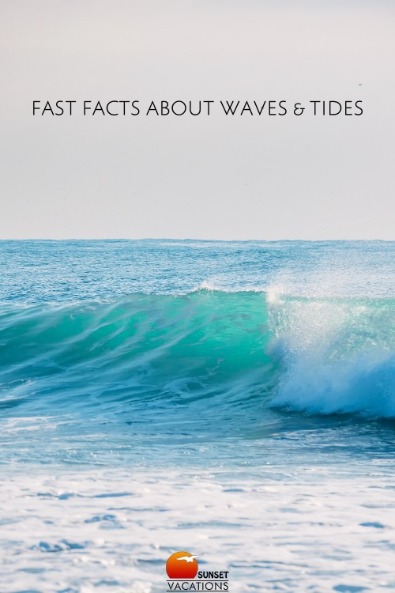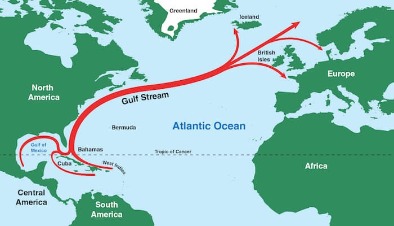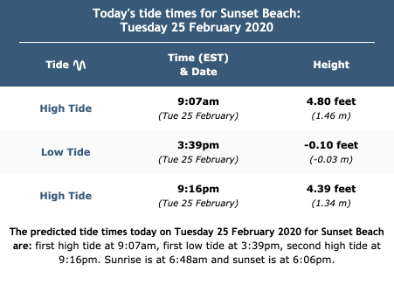Fast Facts About Waves and Tides
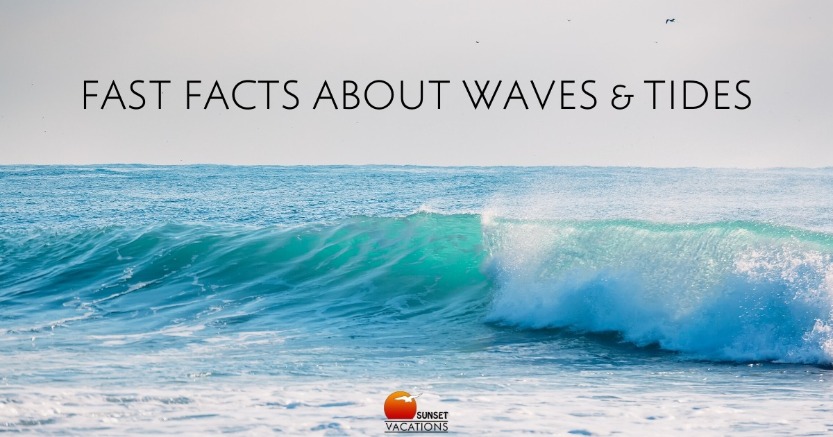
Have you ever wondered how waves are formed, what makes them stronger, or why the tide insists on ruining your perfectly built sand castle? We are going to explore some fun facts and trivia about waves and tides. It will make you look at the ocean in a whole new way!
It's actually important to understand waves and tides because they can really affect your day if you are looking to surf, swim, fish, or take out the boat. "Don't ever turn your back on the ocean" is actually a phrase we repeat to the kids when we are at the beach, because right after a little wave passes by and you think you're in the clear, a huge wall of water will barrel towards you and knock you under, leaving you a bit bewildered and possibly with a mouthful of sand and salt water.
Whether you enjoy the ocean by diving right in – or prefer to observe from the safety of your Sunset Beach rental – we can all agree that it is amazing work by the always impressive Mother Nature.
Waves & Tides - Explained.
🌊 Waves are usually caused by wind.
The wind simply transfers its powerful energy to the water, which forms a rising crest of water (a wave). These waves gain power and speed, forming swells that can travel for great distances (right up to the moment they take you down in a sputtering fall near the shore). The wave's size will depend on many factors, including wind speed, duration, and the surface area over which the wind is blowing (the fetch).
🌊 The "Fetch" causes waves.
Fetch is the name for the big area of the ocean over which the wind blows to create waves! The size of this area helps determine just how much power waves will be able to generate. Waves in the Pacific Ocean tend to get much bigger than our Atlantic Ocean waves, because they have a larger fetch over which to travel.
Bigger fetch = bigger waves.
🌊 Swells are collections of waves. Surfs up!
As waves gain time and distance, deep waves develop, known as swells.
Swells can actually travel thousands of miles without changing shape or height!
The time that passes between swells determines how big its waves will be.... the longer between swells, the bigger the waves! Surfers love when there are more than 12 seconds.
Read more about swells and waves here.
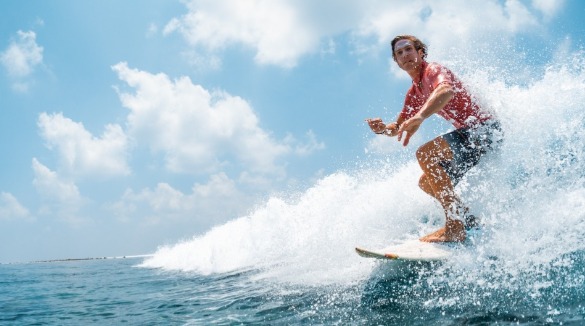
🌊 ...although sometimes waves are caused by earthquakes (tsunamis come to mind).
Traveling at up to 400 miles per hour, tsunamis are deadly waves caused by huge shifts in the earth (not the wind), such as landslides or earthquakes! They cannot be predicted in advance and they often happen in clusters, one after another.
🌊 Rip currents are faster than an Olympic swimmer.
Rip currents form when a narrow channel of water is formed. Basically, waves of different strengths break along the shore and the ocean, in an effort to keep that water level even, pulls hard to grab that water back into its depths, creating a super strong current under the water... one that is hard to spot! Learn how to spot a rip current and heed any warnings on the news or at the beach.
If caught in a Rip Current, do the following:
- Don't fight the current.
- Swim out of the current (usually parallel to shore), and THEN swim to shore.
- If you can't escape, just float or tread water. Save energy.
- Call or wave for help.
- Read more
🌊 The Gulf Stream brings warm water to sunny Sunset Beach!
"The Gulf Stream is a strong ocean current that brings warm water from the Gulf of Mexico into the Atlantic Ocean.
It extends all the way up the eastern coast of the United States and Canada."
Click here for more information and source.
🌊 Tides are waves!
Huge waves, in fact. That being said, tides are directed by the forces of the moon (and sun), not the wind, like the waves we commonly think about.
The sun and moon's gravitational pull cause our oceans to "bulge out" on the opposite sides of the earth, every day, day in and day out. The bulges create high tide (that's when you will need to start moving your beach chair back a bit).
🌊 There are two high tides and two low tides every day.
According to the National Ocean Service, "Because the Earth rotates through two tidal “bulges” every lunar day, coastal areas experience two high and two low tides every 24 hours and 50 minutes. High tides occur 12 hours and 25 minutes apart. It takes six hours and 12.5 minutes for the water at the shore to go from high to low, or from low to high."
Click here to see the tide forecast for Sunset Beach at any given moment (see example at right).
🌊 A "Spring Tide" is stronger than a normal tide.
When the sun, moon and earth all line up, the gravitational pull is tremendous! This causes a Spring Tide, and it happens just after a new or full moon. When this happens, you will observe the biggest distance between low and high water on the beach. This is a great time to look for shells deposited on the beach! Careful, rip currents tend to be stronger at this time.Oh, and Spring Tides have nothing to do with the season of Spring. Who knew?
🌊 A Neap Tide is a weaker than normal tide.
A Neap Tide happens when the earth, sun and moon create a right angle. The gravitational forces of the sun and moon cancel each other out, so the difference between low and high water isn't as obvious.
This happens just after the first and third quarters of the moon, which is twice a month. The time between a spring and neap tide is about a week!
Waves and tides can take you for a ride!
You don't have to be a surfer to appreciate the power of the ocean's waves. It's exciting to learn just how our ocean comes alive and the science behind its immense strength.
Sunset Vacations has been helping vacationers experience the power of the ocean since 1984! If you would like help planning a vacation to Sunset Beach, all you have to do is ask.
Want to learn more about the beach, ocean, or Sunset Beach?
